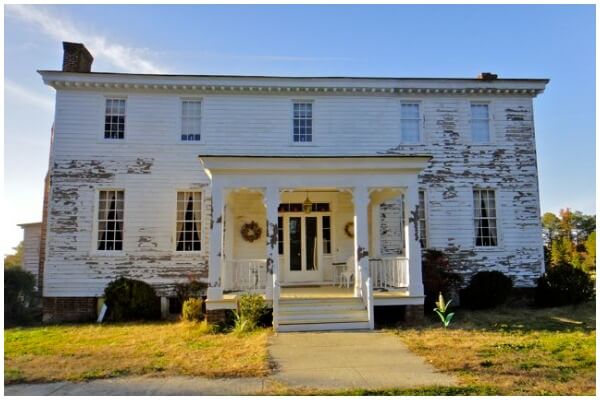Are you one of the fortunate homeowners who just purchased an old house? If so, congratulations! There is just something extraordinary about living in a home with tons of history. But before you start envisioning yourself living in an old house, there are a few things you should know.
Working with an older property might be tricky when it comes to house renovations. Older homes were built with different materials and to lower standards than today. It means that all sorts of hidden problems could lurk beneath the surface.
Here are seven things to expect when renovating an old house. By being prepared, you’ll be able to hit the ground running and take on this exciting project with confidence!

1. Foundation Problems
One of the most typical problems with old houses is foundation issues. Over time, foundations can settle or crack. It can cause all sorts of concerns, like cracks in the walls or doors that won’t close properly. It may also cause your floors to feel uneven. If you notice any gaps in your foundation, it’s vital to have them repaired as soon as possible because neglecting foundation problems will only make them worse.
2. Asbestos
If your old house was constructed before the 1980s, there’s a good chance it contains asbestos. Builders used this common construction material in everything from insulation to flooring and ceilings. Asbestos exposure can cause several health problems, so it’s best to be safe and have it removed.
If you’re planning renovations involving drilling, sanding, or stripping, you must first have your house tested for asbestos. If your old home does contain asbestos, you’ll need to hire a professional for asbestos removal. They have the experience and equipment to remove it safely.
3. Lead Paint
If your house was constructed before 1978, there’s a good chance it contains lead paint. Lead paint can be dangerous, especially for small children and pregnant women, as lead is a heavy metal that can be poisonous. Lead poisoning can result in anemia, weakness, and kidney and brain damage. It is commonly found on windows, doors, trim, and stairs.
When dealing with lead paint, taking the proper precautions is essential. Lead dust is the most dangerous lead exposure form, so you must be very careful when sanding or stripping paint. If possible, hire a professional to remove the lead paint. If you do it yourself, wear a respirator and proper clothing.
If a respirator is not available, using an N95 mask can also greatly reduce the risk of inhaling lead dust, which is the most dangerous form of lead exposure. It’s crucial to take all the necessary precautions to protect yourself and others from the harmful effects of lead.
4. Pest Problems
Another common problem in old houses is pests. Old properties are especially prone to pest problems because they often have more cracks and holes than newer homes. Mice, rats, cockroaches, and other pests can make their way into your home through cracks and holes. Once they’re in, they can be challenging to get rid of. If you detect any pests in your house, you must call an exterminator immediately.
5. Damp and Mold
Another issue you might encounter in an old house is dampness and mold. Moisture can cause many problems, like rot, mold, and mildew. It can also lead to health crises, like respiratory problems and allergies. When renovating an old house, it’s essential to look for dampness and molds.
Molds thrive and spread quickly and won’t go away on their own. If you notice any, you need to address the problem right away. Molds may usually be eliminated using a solution that includes bleach or hydrogen peroxide. Also, to avoid any health risks, wearing a mask and gloves when working in an area with dampness or mold is essential.
6. Electrical Problems
Older homes often have electrical problems. The wiring in older homes isn’t always up to code, so it might not be able to handle today’s electrical load. They might also be old and worn, leading to shorts and fires. Knob-and-tube wiring is used in many older or historic homes.
It’s not against the law and is still allowed under today’s building code, but most insurance companies won’t insure homes that have it. It doesn’t have a grounding path, making it more likely to cause damage to your electronics. Not only that, but knob-and-tube electrical systems don’t include three-prong outlets, which many modern appliances require.
On the other hand, the wire coating may be well on its way to wearing away. It can create a severe fire hazard. You should replace any old wiring with a new one during renovation. It is also a great idea to have a professional electrician come and take a look at your electrical system. They can check for problems and ensure the system is up to code.
7. Plumbing Problems
Older homes often have plumbing problems, too. The pipes might be old and corroded. They might also be made of materials that are no longer used, like lead or iron.
Old pipes can lead to many problems, like leaks and water damage. If you detect severely rusted pipes with poor water pressure or notice that the water from your faucets is discolored, you should have them replaced. It may require a complete re-piping of your home, which can be expensive. However, it’s worth it to avoid the problems that old pipes can cause.
Conclusion
The above things must be kept in mind when renovating an old house. By being aware of these potential issues ahead of time, you can save yourself a lot of headaches (and money) later on. Have you renovated an old home before? What challenges did you encounter? Let us know in the comments!